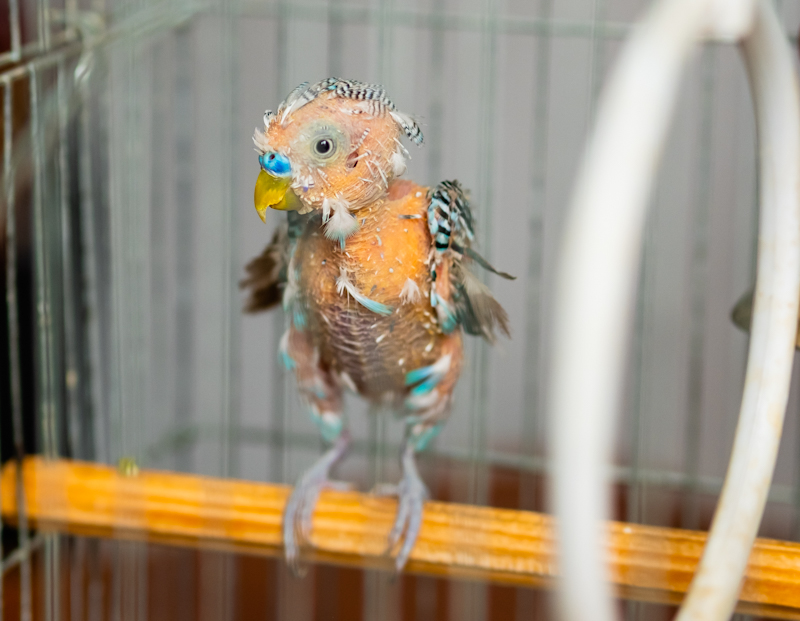JavaScript seems to be disabled in your browser. For the best experience on our site, be sure to turn on Javascript in your browser.
Lovebird Molting: Symptoms and Care

When molting starts occurring in your bird, the first notable change in your lovebird will be the distinct new feather "roots" that appear on its face and head. These roots will feel coarse under your touch and their back may appear wrinkled, and you will also notice their base feathers. When old feathers are lost, some portion of their back will look whitish. Feathers will also get lost on both sides of the outer wings.
Molting simply put is a process where birds in their old feathers are replaced by new ones.
This takes place two times a year or more, hinging on their age and the weather at the time. Molting normally takes place when the weather changes.
Your lovebird's attitude shifts when he/she is going through molting. Below are some common signs that your lovebird will display when he/she is going through molting.
- A display of aggressive behavior
- Unnecessary biting is exhibited even in hand-raised pets
- They Lose their appetite
- They start scratching vigorously
- They would resort to screaming
- They are easily Irritable
- They have new feather "roots" on the face and head
- They lose feathers
- A Lot of grooming of feathers
- Bird dust is blown while preening or taking a bath
- Getting easily tired
- Sleepiness
What Do You Do If Your Lovebird Molts?
For your lovebird, molting could be a really tough time. It is vital to understand that lovebirds will remain very moody and stubborn during this time. The way humans itch themself day and night, feel irritated and lost from within, for maybe a month or more is what lovebirds face when they experience a molt.
When your love bird molts you first purchase the following remedies; Feather Up Molting Powder, Parrot Feather Bath Spray, and Scarletts Fine Feathers Parrot Mix, after which you carry out the following activities with your lovebird:
-
Playing:
Since your pet is feeling grumpy as a result of molting, you can make him/her feel better by providing toys which are safe and fun. These play items could include paper (for shredding) and threaded hair ties that don't have plastic and metal and cardboard. Doing this would help put your pet in a better mood, distract it when angry, release happy hormones in your pet, and let your pet enjoy this miserable condition
-
Bathing Your Lovebird
Bathing your lovebird put your pet in a good mood and helps him/her by reducing the itch. It is essential that a bath is provided and that your pet is clean. To help your lovebird bath, you could fill a bowl with clean and warm water, dip and splash the water with your fingers and make a big show, making your pet believe that you're enjoying it and then ask your pet to join you as well, by sweet talking and calling them repeatedly.
If your pet refuses to bathe even after this, place him/her in the cage and spray bath him/her with clean, warm water.
-
Give your lovebird a scratch
Molting provokes a lot of itching in lovebirds. Your lovebird will be seen scratching its head and cleaning its feathers by itself for a long period. You can help your pet slowly scratch their heads and beak If your pet allows you to touch him/her. Your bird will surely love this as it will help your bird feel less itchy and increase your bond with them.
If your lovebird wants to be scratched, he/she will lay its head and rub it against your finger. Ensure you scratch its head softly as the developing feathers when scratched accidentally cause pain.










